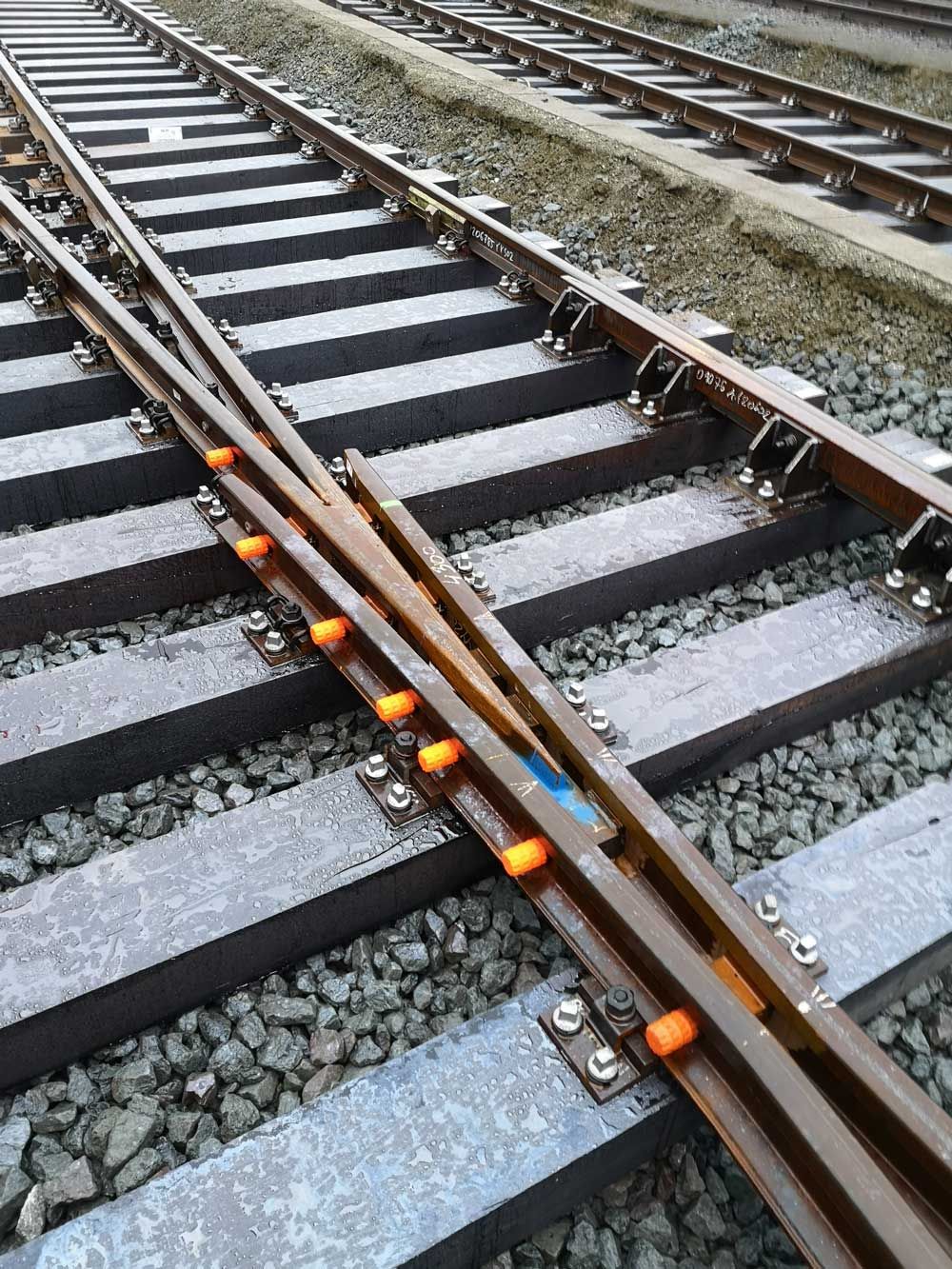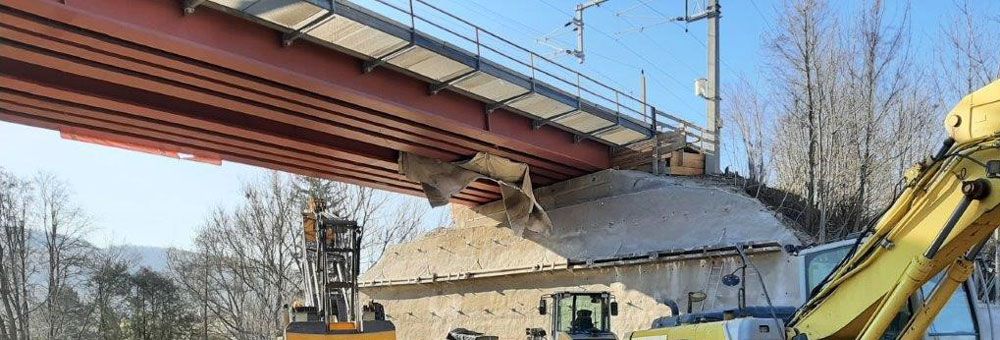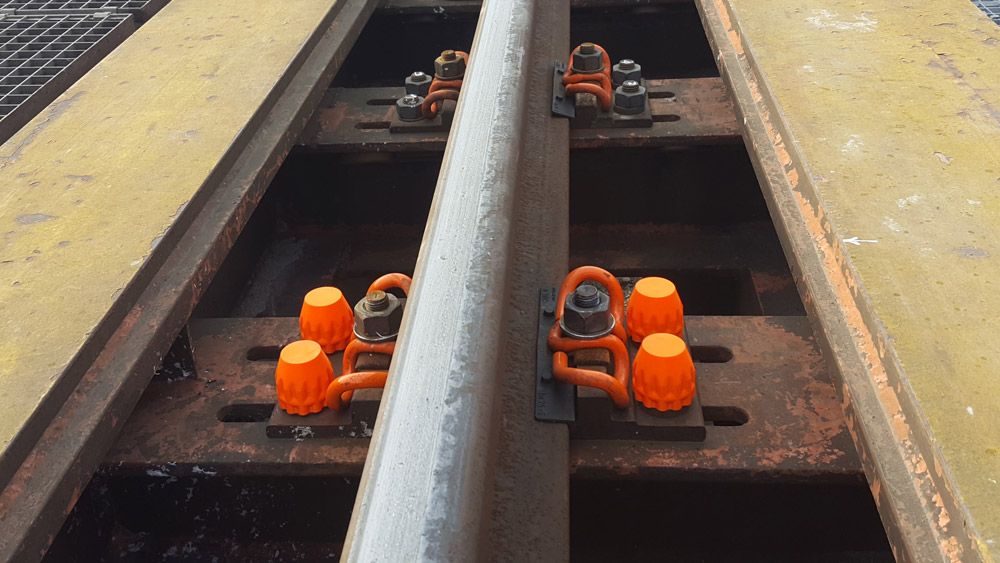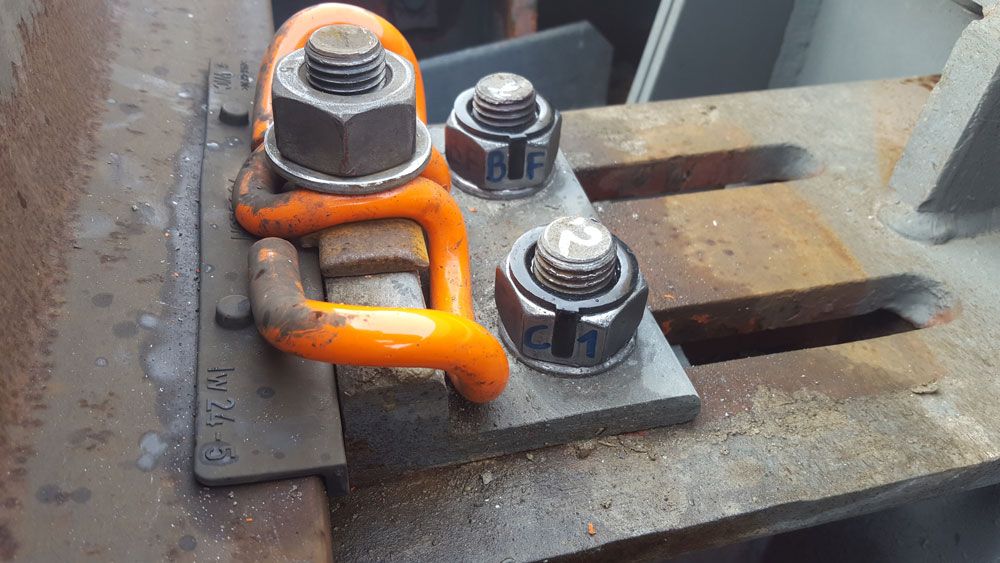References
Executed reference projects
Bolted connections of noise barriers on railway bridges (2022 - ongoing)
Continuous condition monitoring and predictable maintenance planning are also hot topics in the railway sector. An inconspicuous but very important component that is subject to highly dynamic stresses when trains pass by are the bolted connections of noise barrier uprights on railway bridges. The steel uprights, which can be up to 5 metres high, serve as a holding device for the large-area noise barrier panels and are bolted directly to the bridge edge beam via foot plates. Concreted-in threaded rods of size M16/M20 in combination with nuts, which are pretensioned with a defined tightening torque, serve as fasteners.
Two problems arise in practice:
Due to the different surface conditions of the threaded rods and nuts and due to deviations in the design of the fasteners, there are strongly scattering coefficients of friction in the bolted joints. Since torque-controlled tightening methods depend heavily on the coefficients of friction between the fasteners, it cannot be guaranteed in this case that the necessary preload force is actually applied to the joint.
The large-area noise barrier panels are subjected to high dynamic pressure-suction loads when trains pass by. The forces that occur are introduced into the bolted connections via the steel bars. Loss of preload force and any fatigue fractures that may occur as a result can only be detected visually when it is too late. In order to avoid bolt fractures, it is therefore necessary to check the preload force regularly.
With the e-Bolt®, REVOSYS gmbh has developed and installed an optimally tailored solution for this application. By using the e-Bolt® nuts, a direct check of the preload force can now be carried out on the fasteners of the noise barrier uprights, both immediately after tightening and at regular intervals. The independence of the coefficient of friction through the direct control of the preload force is to be regarded as the greatest advantage compared to the control with the application of a tightening torque.
Furthermore, no special tool or training is required for the periodic control of the preload force with the use of our e-Bolt®. By using the e-Bolt® in conjunction with the handheld reader (Pocket Work), the actual magnitude of the pre-tensioning force present in the bolted joint can be read off at the touch of a button. The measured values can be transferred from the hand-held reader to a data server via Bluetooth and stored and subsequently visualised on a web platform.
Make your bolted joints safe and stay in touch with e-Bolt!
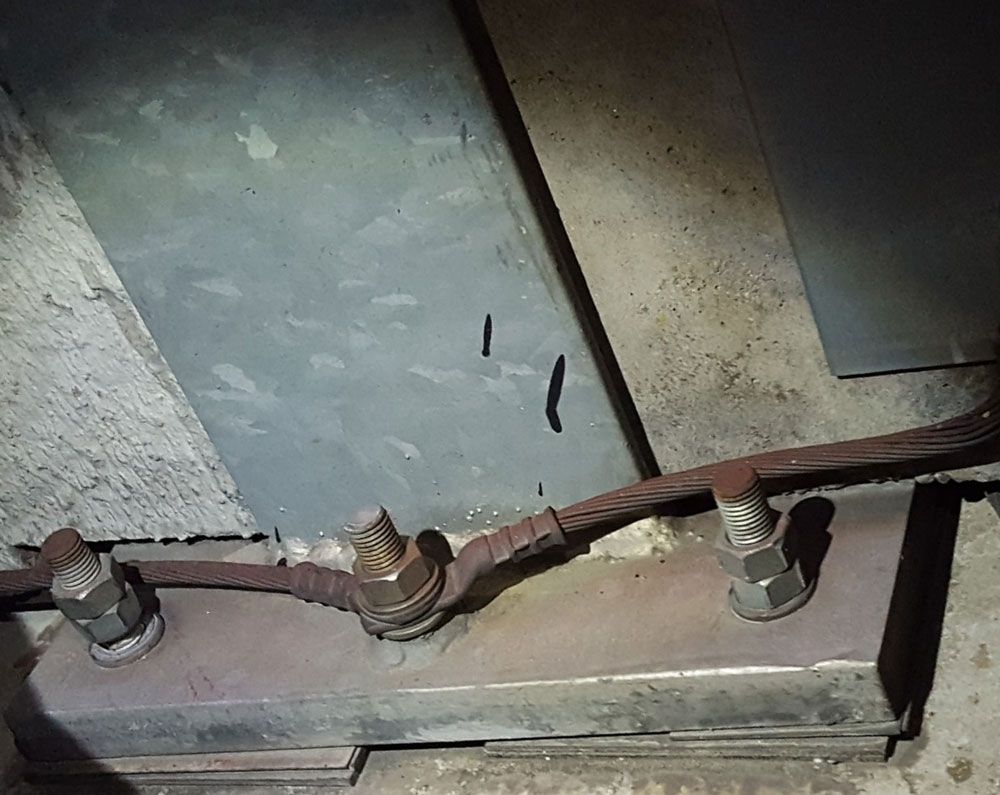
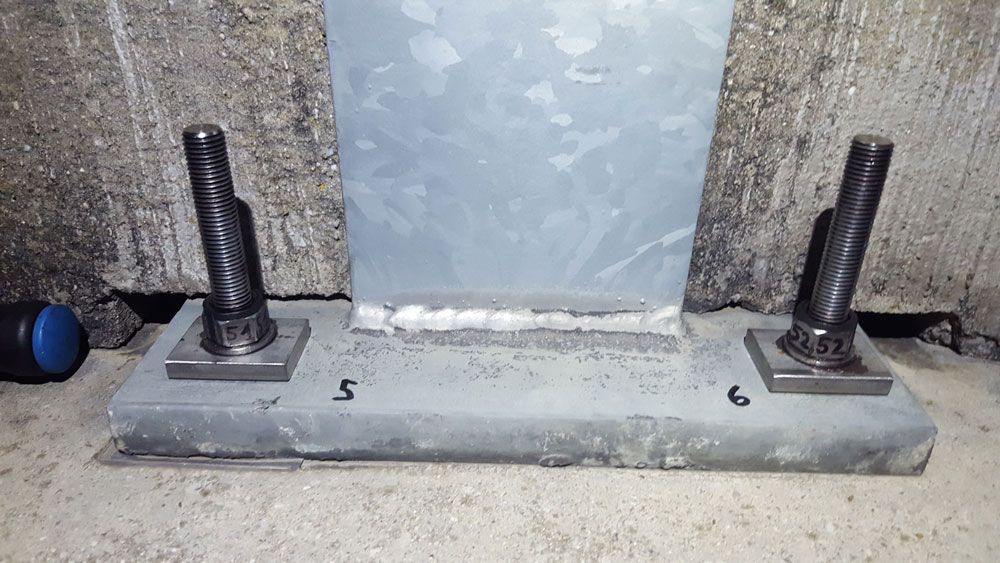
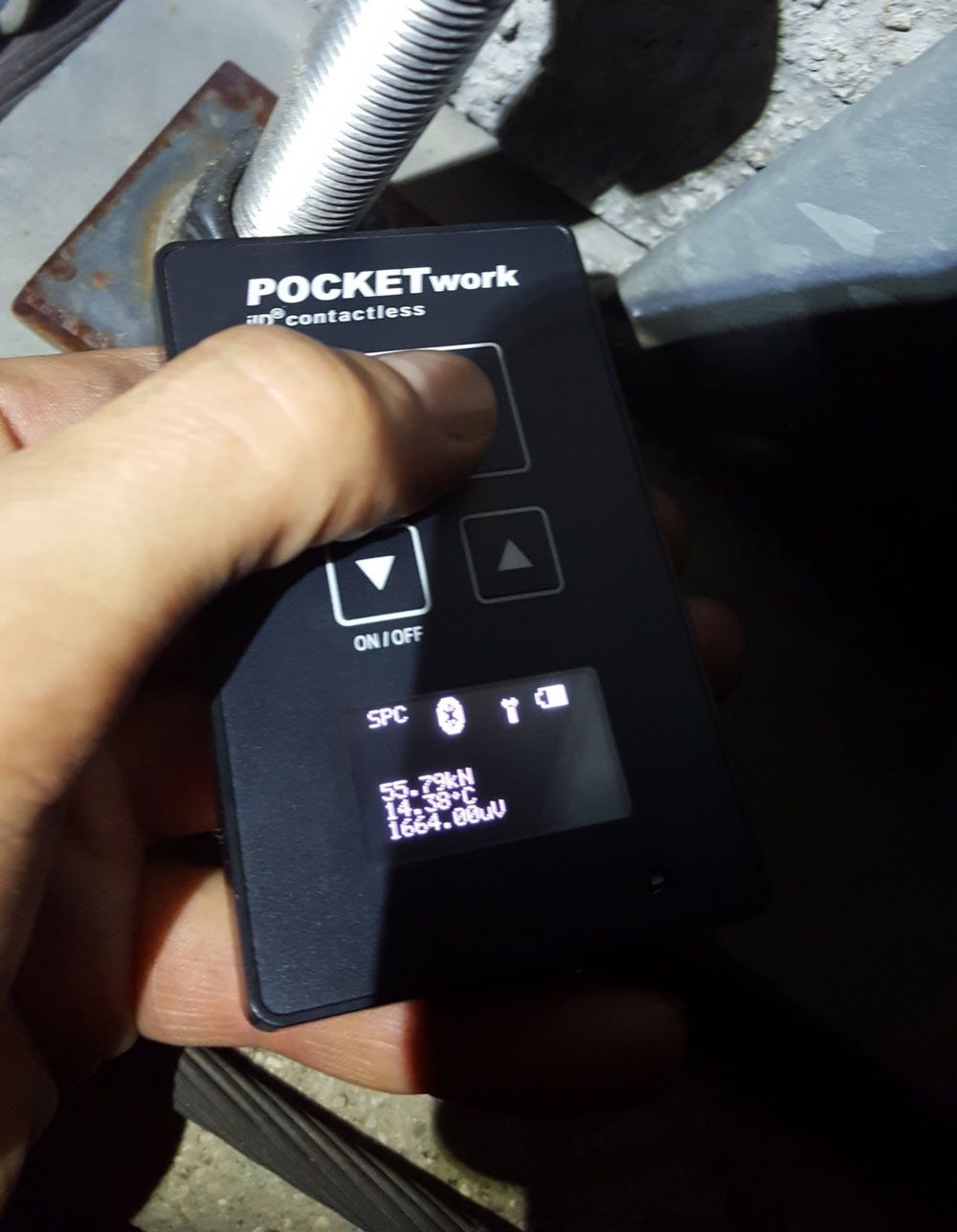
Ribbed plate bolting for railway auxiliary bridges (2022 - ongoing)
Auxiliary railway bridges are temporarily erected, pre-assembled steel bridges that are used to ensure railway operations during construction work that takes place underneath an auxiliary bridge. The individual tracks are bolted directly to the auxiliary bridge with M24 screw fittings via so-called ribbed plates. The low vibration damping of these supporting structures in connection with crossing speeds of up to 160 km/h have an unfavourable effect on the temporal course of the preload force of the ribbed plate bolts. Losses of preload forces occur within a short period of time and therefore the bolted connections must be checked manually on a monthly basis using torque control. As the bolts are tightened with up to 1000 Nm torque, the checks to be carried out involve a great deal of effort or heavy equipment for the personnel responsible.
By using the e-Bolt® nuts, a very simple and quick measurement of the existing pre-tensioning forces can be provided. The periodic inspection of the bolted connections of the ribbed plates can be carried out completely contactless with the e-Bolt® without any effort and heavy equipment. In addition, the working time required to carry out the checks can be reduced to up to 50%, as instead of retightening with tools, only a single keystroke is required to measure the preload forces. This results in a reduction of material costs, personnel and downtime.
Make your bolted joints safe and stay connected with e-Bolt!
Composite heart bolting for rail switches (2022 - ongoing)
Composite heart bolting’s are an important component in connection with rail switches, as they form the crossing of two individual rails. The track switch consists of several bolted individual parts, which are subjected to very high dynamic stresses due to the passing of trains. The loss of pre-tensioning force of these bolted connections caused by the loads can only be seen visually when they are loose and can be visibly moved or have already broken. REVOSYS GmbH installs its e-Bolt® nuts for these applications in order to prevent this complete loss of pre-tensioning force in the composite heart bolted connections. By using the e-Bolt®, the actual magnitude of the preload force present in the bolted connection can be precisely determined at the touch of a button and a loss of preload force can be detected at an early stage. A complete loosening of the connections and the associated consequential damage are thus prevented.
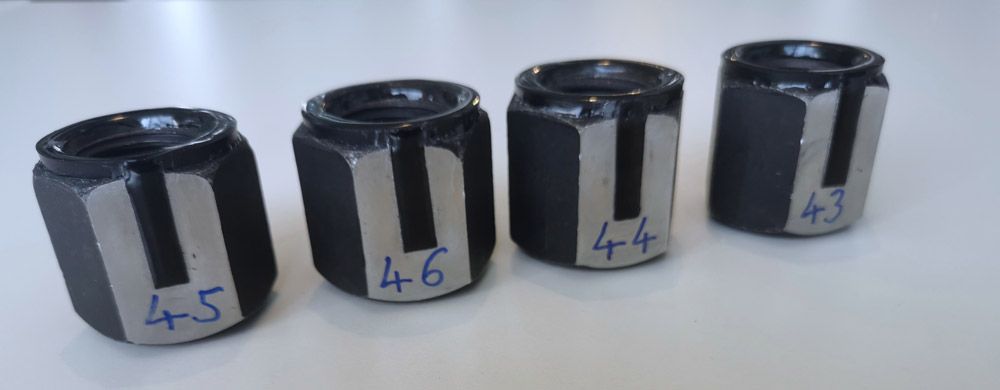
Make your bolted joints safe and stay connected with e-Bolt!
